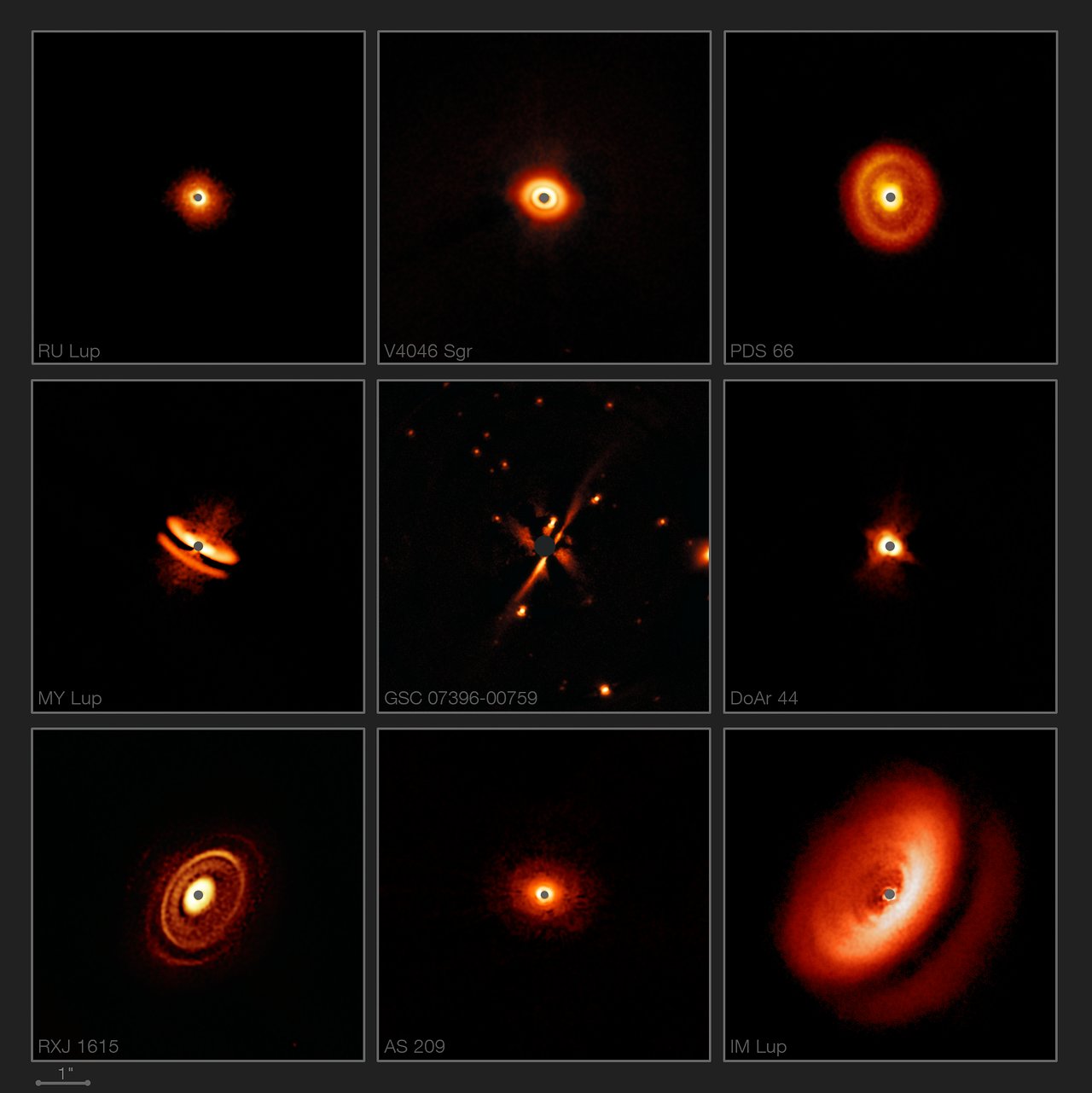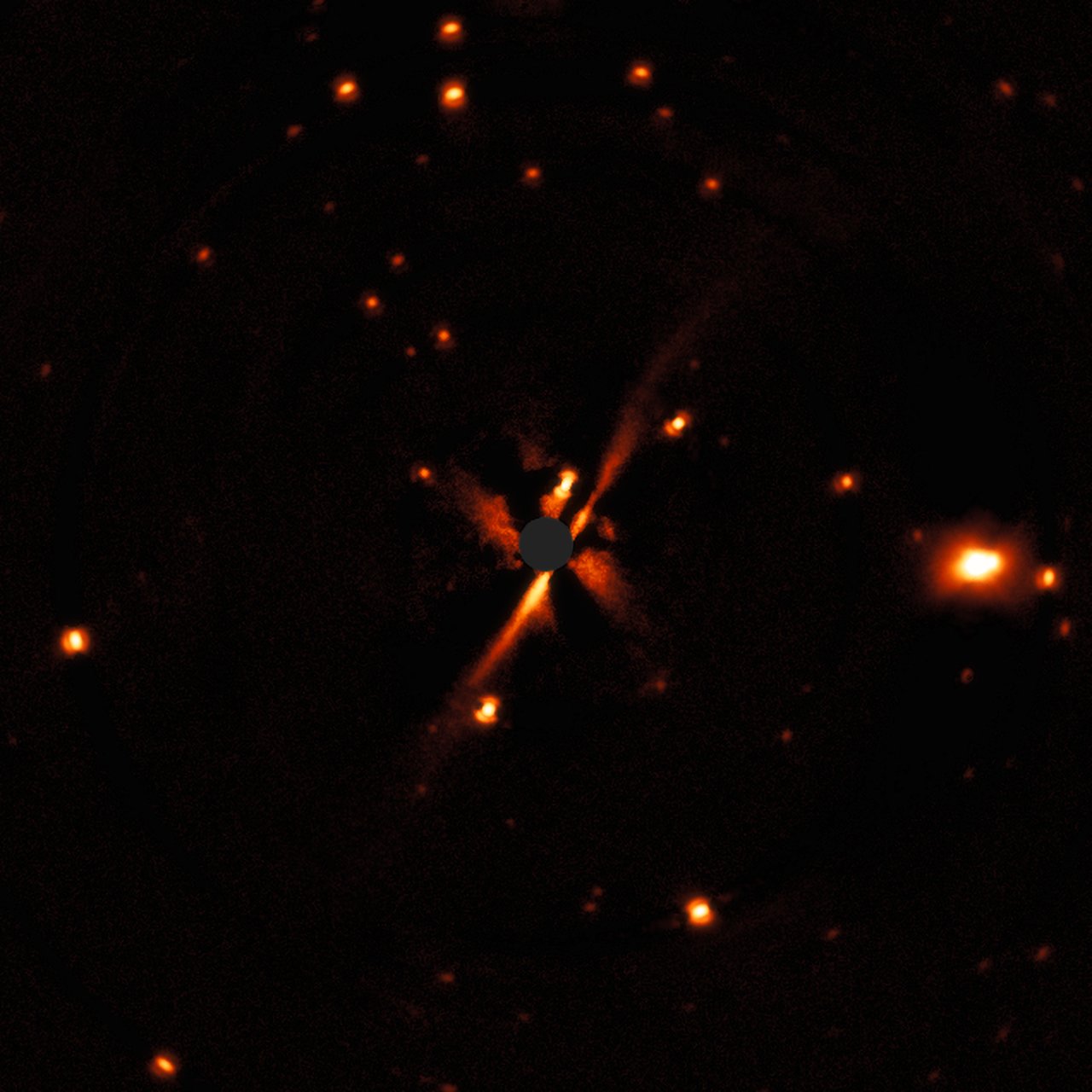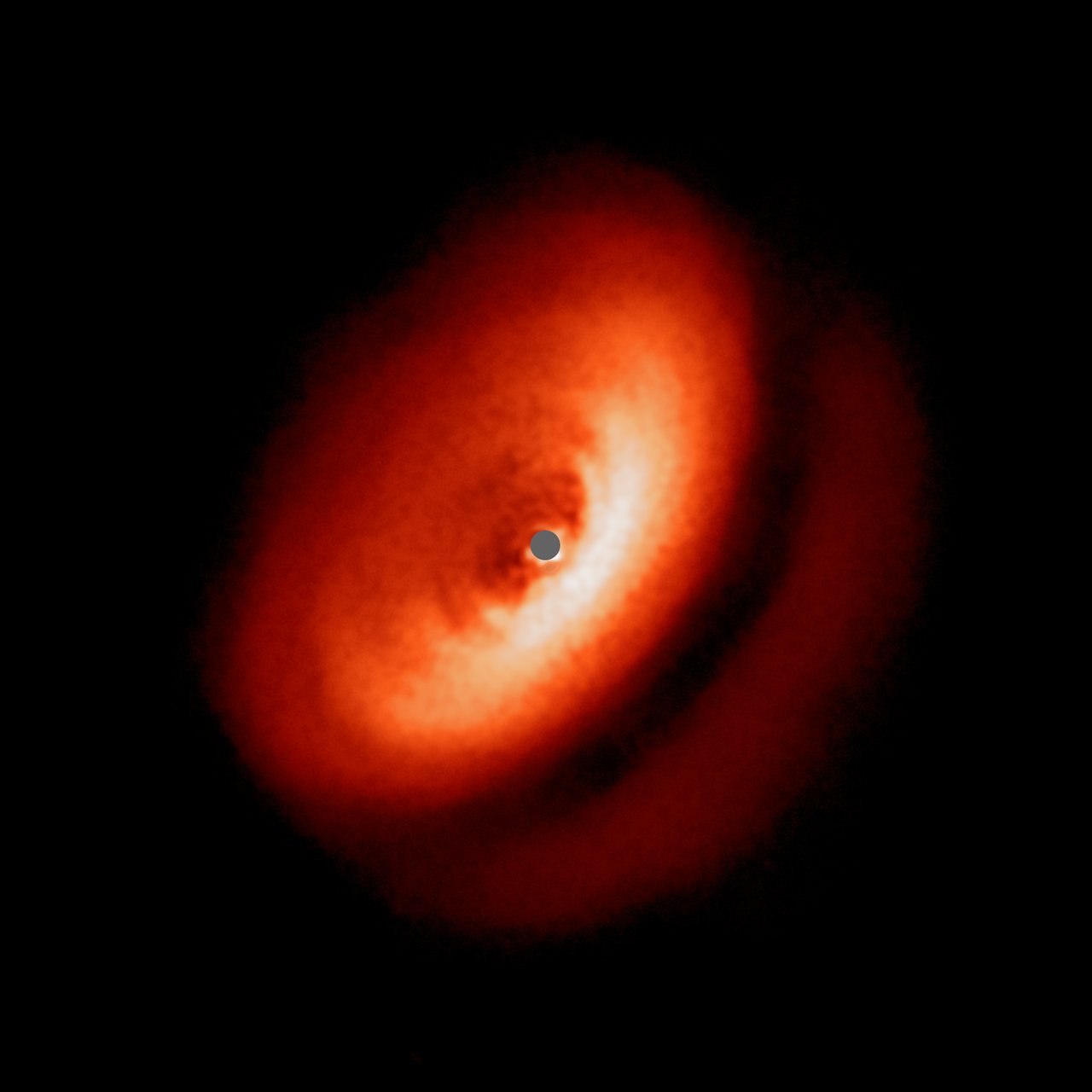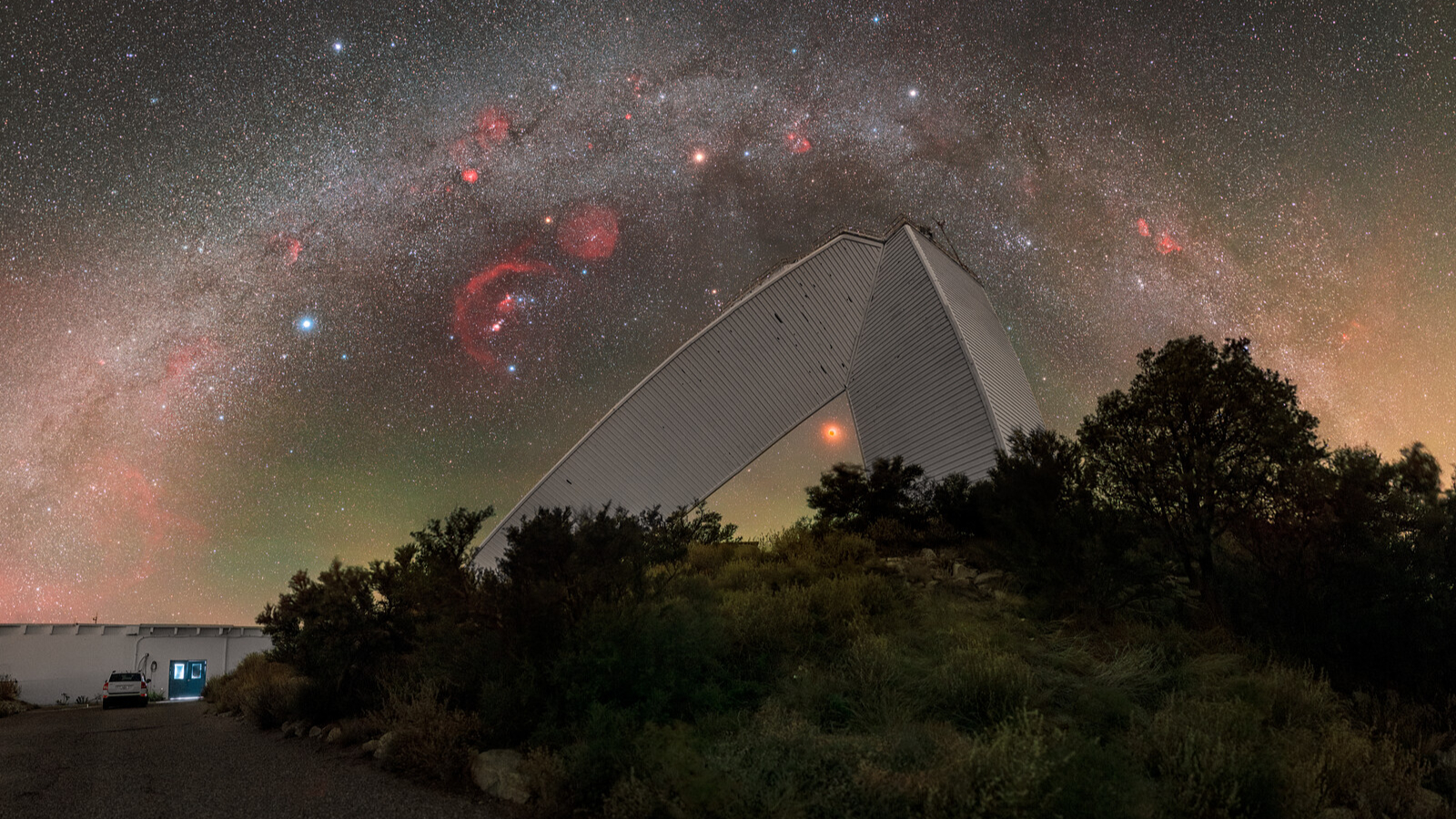New Planets May Be Forming Around Young Nearby Stars, Dusty Disks Suggest
Diverse disks of dusty material have been spotted around nearby young stars, suggesting new planets are sprouting up around the alien stars.
New images from the SPHERE (Spectro-Polarimetric High-contrast Exoplanet Research) instrument on the European Southern Observatory's (ESO) Very Large Telescope in Chile reveal a wide variety of dusty disks in unprecedented detail.
Specifically, the disks are seen around nearby young stars and contain gas, dust, and planetesimals which combine to form developing planets. Researchers have observed a remarkable variety of these disks, differing in size, shape and structure, according to a statement from ESO. [The Strangest Alien Planets (Gallery)]

"These discs are wildly different in size and shape — some contain bright rings, some dark rings, and some even resemble hamburgers," ESO representatives said in the statement. "They also differ dramatically in appearance depending on their orientation in the sky — from circular face-on discs to narrow discs seen almost edge-on."
Many of the stars found to be surrounded by a dusty disk of rocky debris are in the "T Tauri" phase, meaning they are still very young — less than a million years old — and vary in brightness. The stars are located between 230 and 550 light-years away, making them relatively close to Earth, according to the statement.

Despite this proximity, it can be difficult to study the protoplanetary disks surrounding these stars because the bright light from the parent star itself often outshines the faint reflected light from the disks. However, the researchers were able to get a detailed view of the dusty disks using the SPHERE instrument, which blocks the bright light of nearby stars to reveal the regions surrounding them.
Dusty disks surrounding young stars are prime targets for research, as they are believed to be regions in which planets may be forming. Therefore, a better understanding of these regions could reveal insight into planet formation, as well as clues to what our own solar system may have looked like in the early stages of its formation, more than 4 billion years ago, according to the statement.
Get the Space.com Newsletter
Breaking space news, the latest updates on rocket launches, skywatching events and more!

Follow Samantha Mathewson @Sam_Ashley13. Follow us @Spacedotcom, Facebook and Google+. Original article on Space.com.
Join our Space Forums to keep talking space on the latest missions, night sky and more! And if you have a news tip, correction or comment, let us know at: community@space.com.

Samantha Mathewson joined Space.com as an intern in the summer of 2016. She received a B.A. in Journalism and Environmental Science at the University of New Haven, in Connecticut. Previously, her work has been published in Nature World News. When not writing or reading about science, Samantha enjoys traveling to new places and taking photos! You can follow her on Twitter @Sam_Ashley13.
